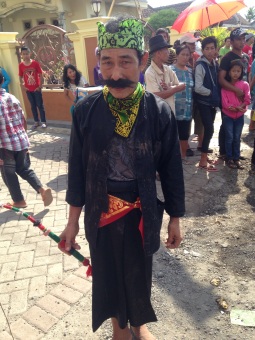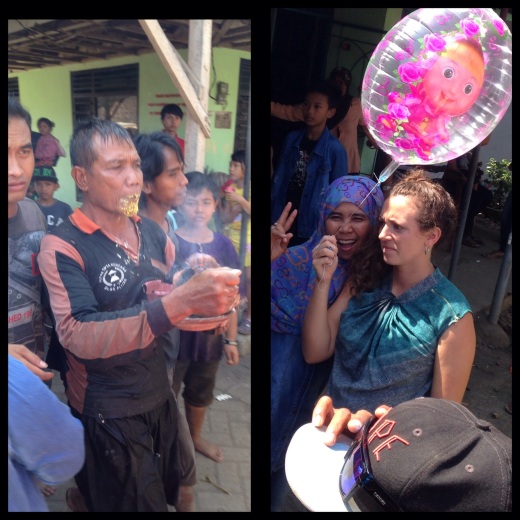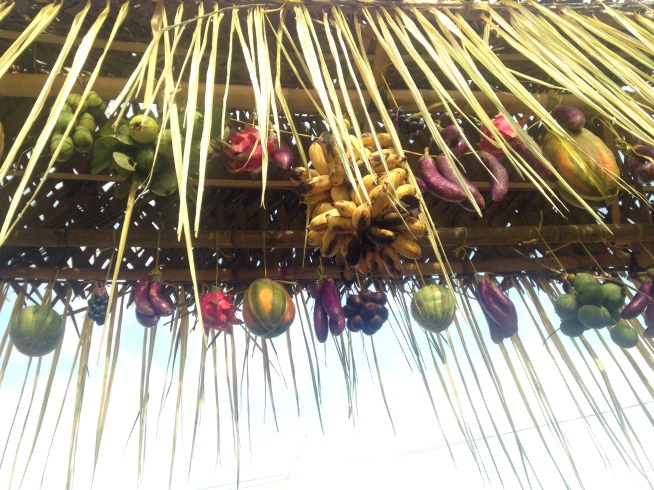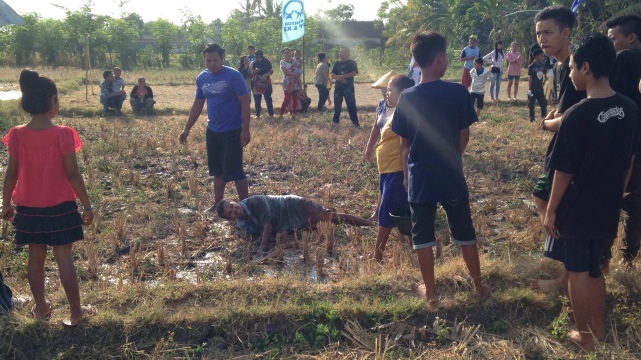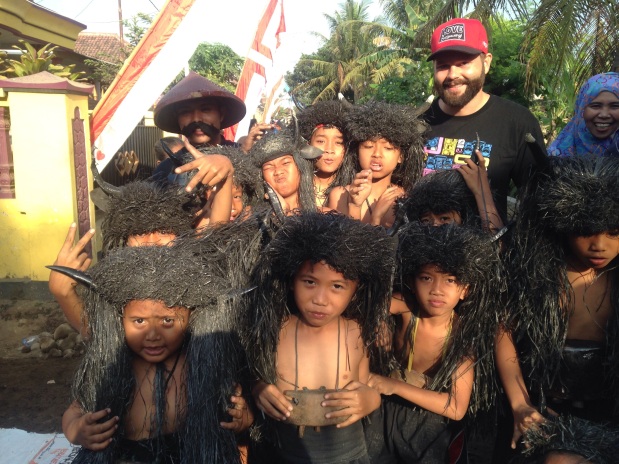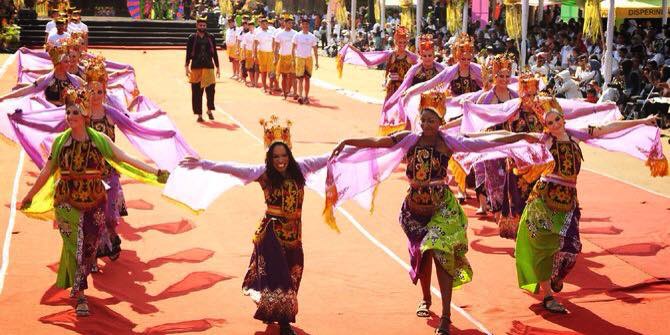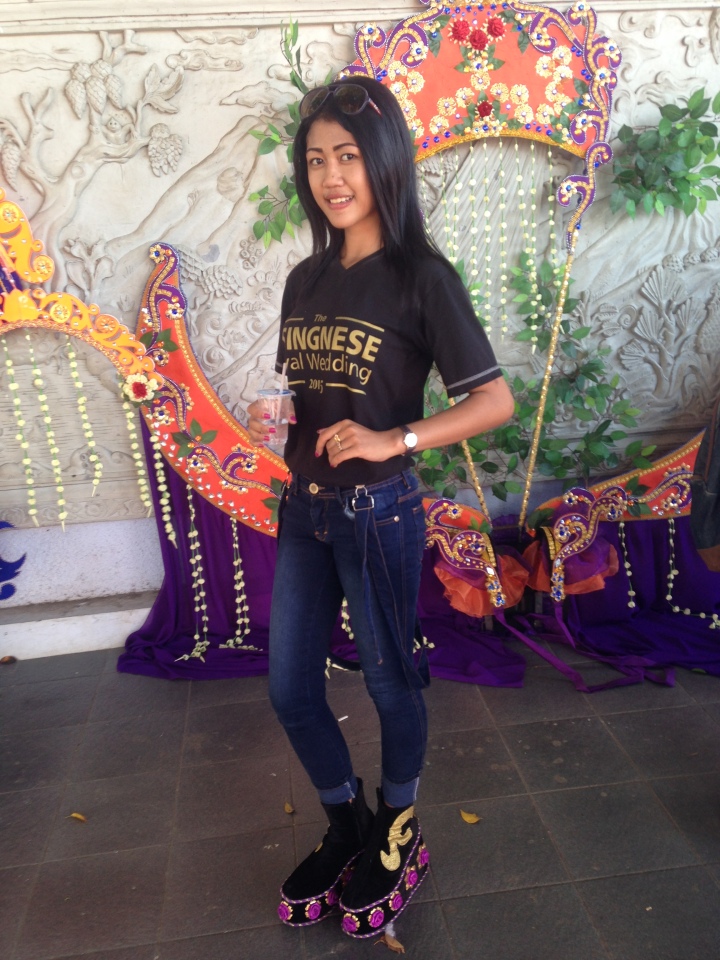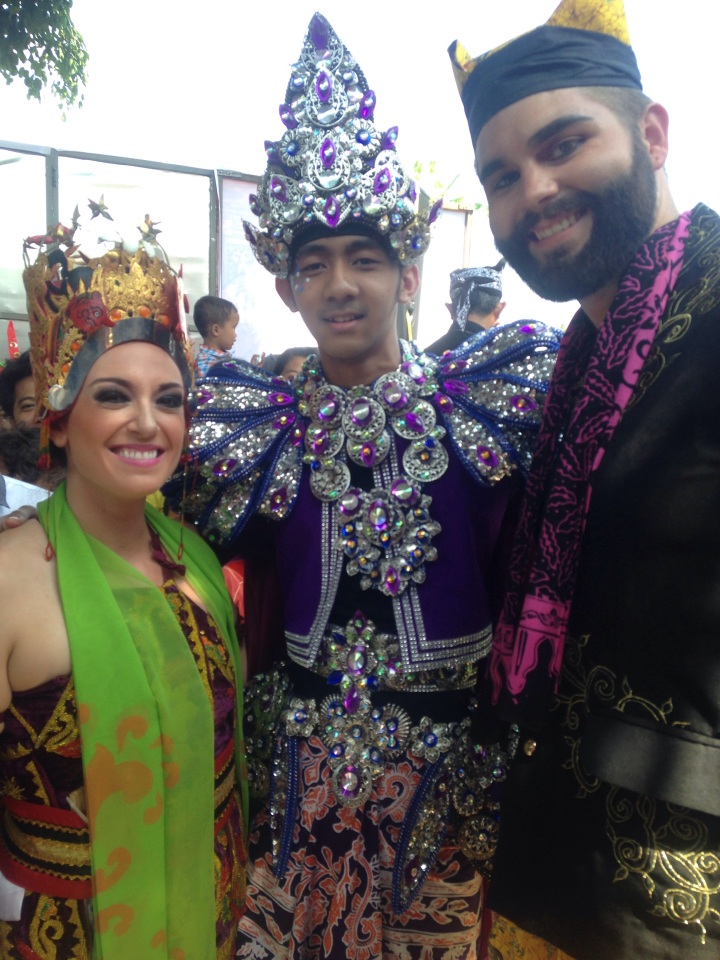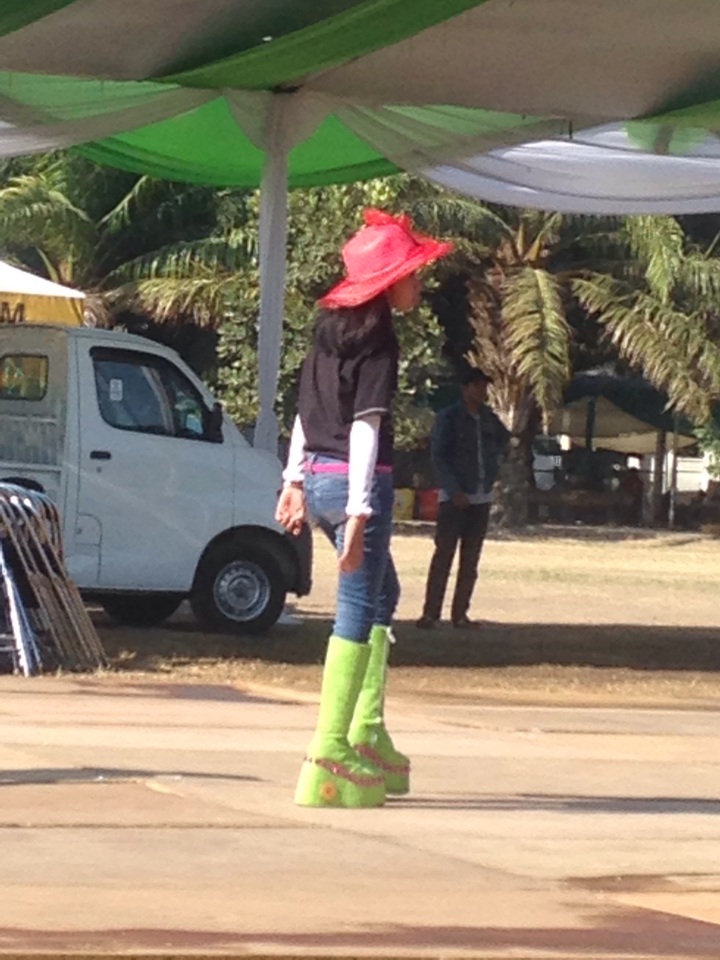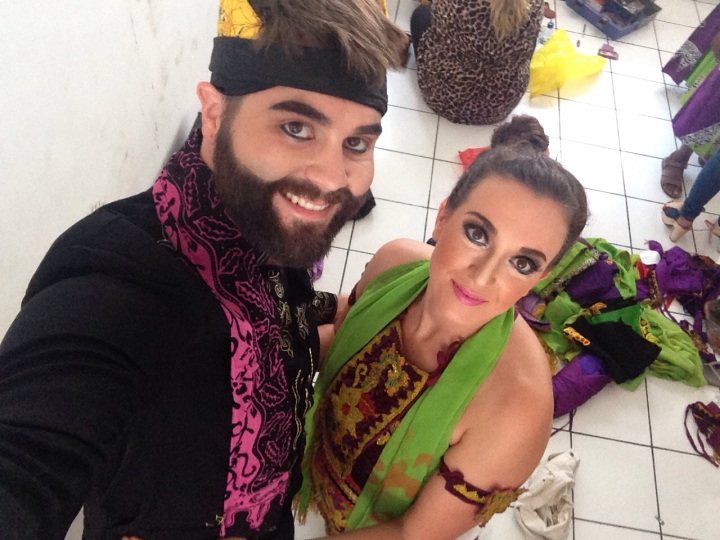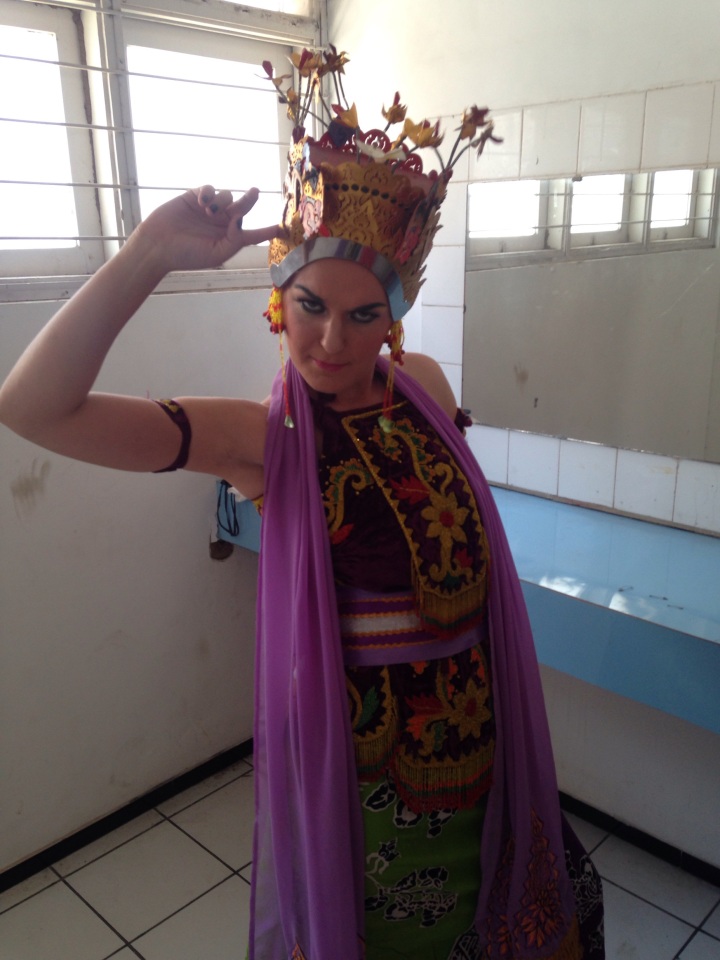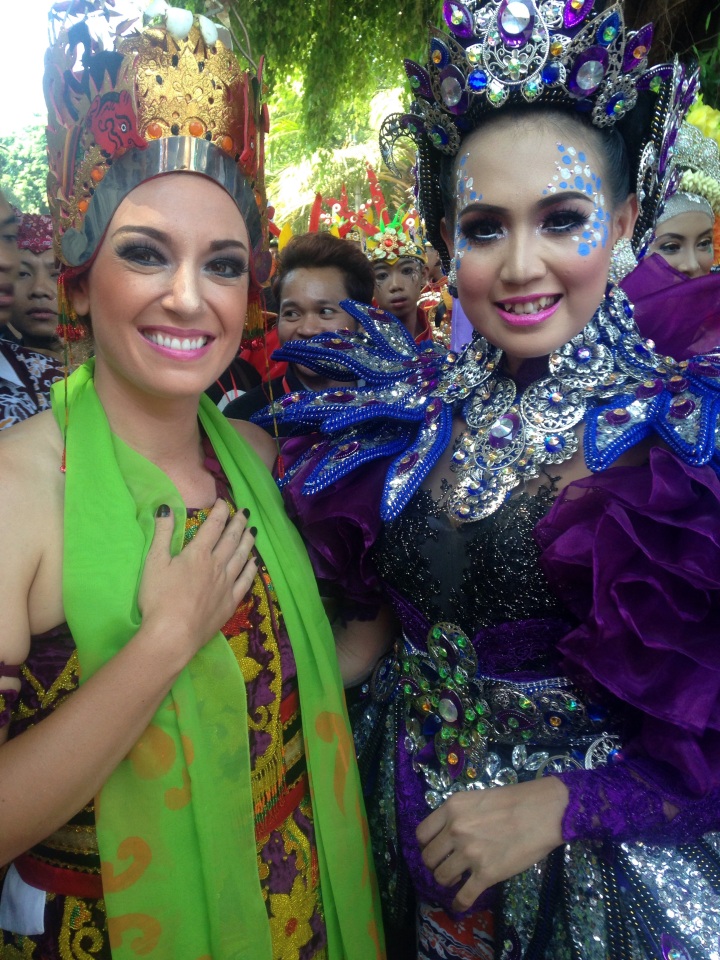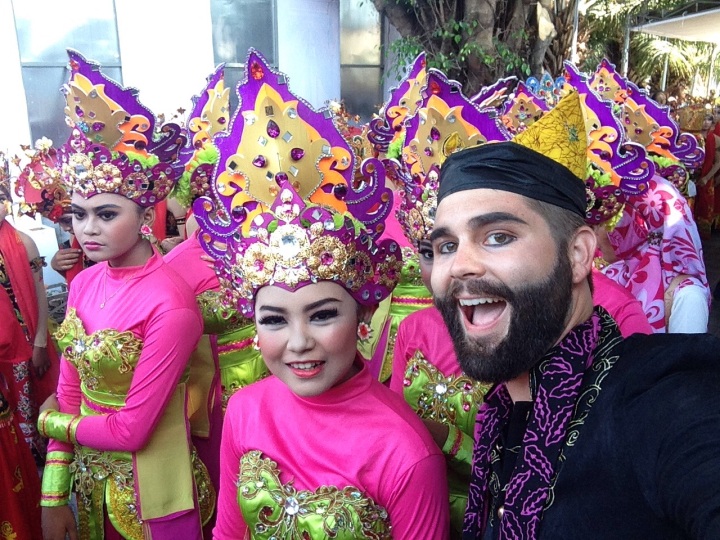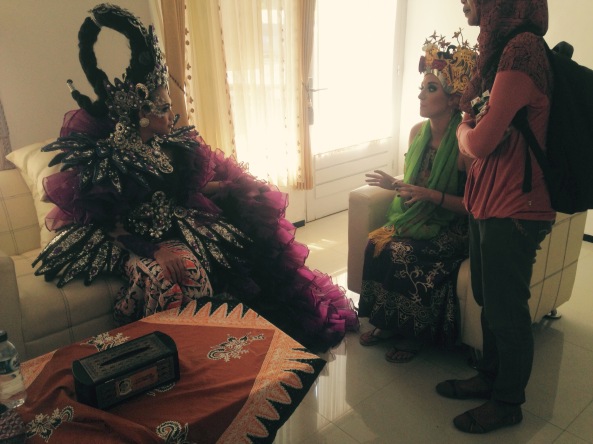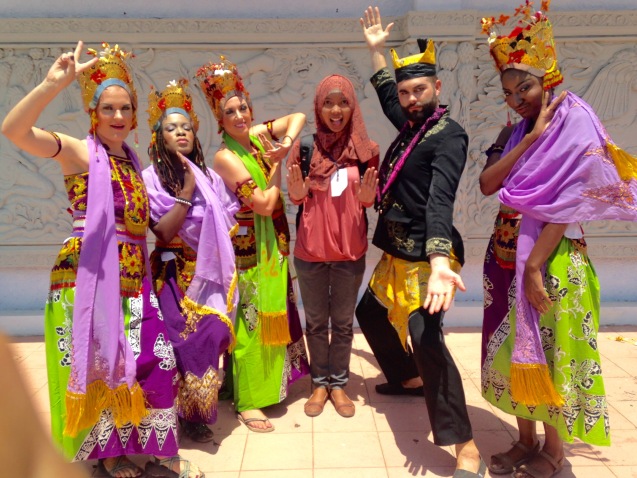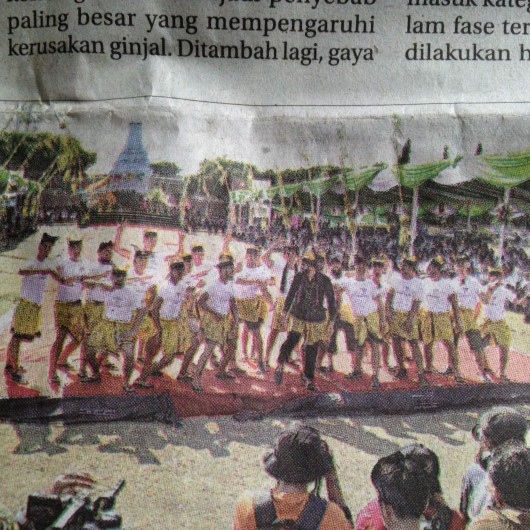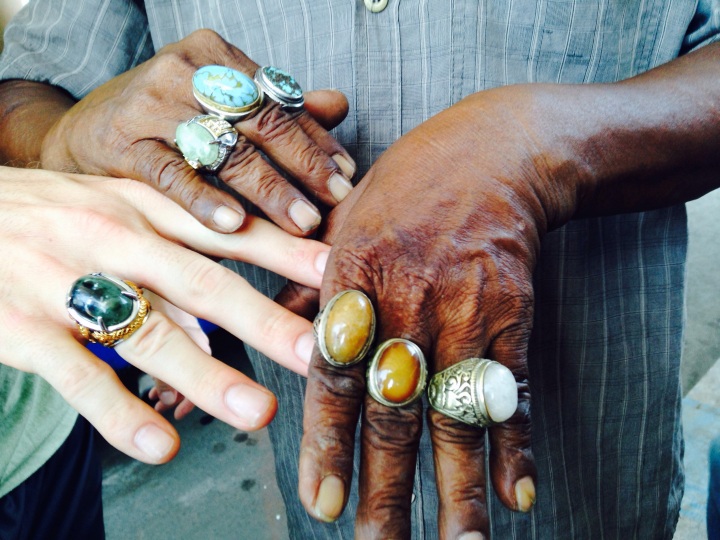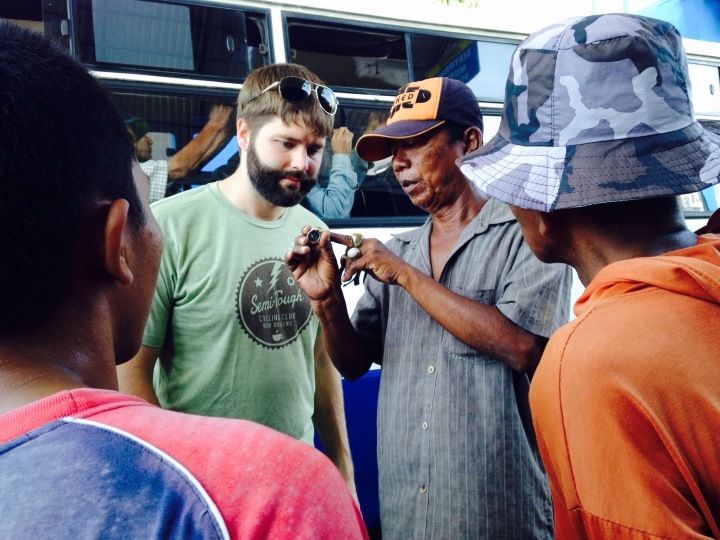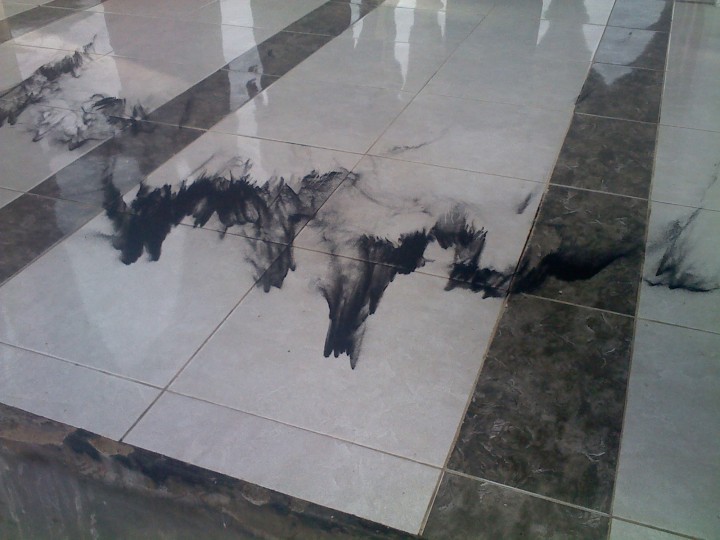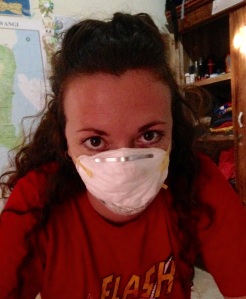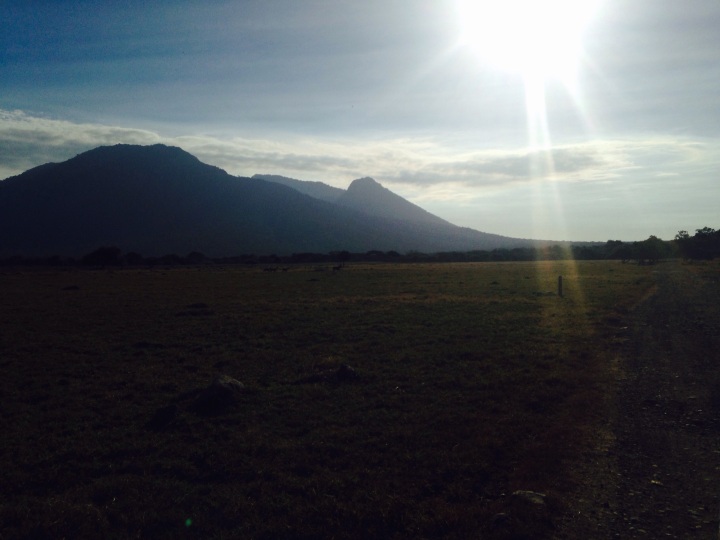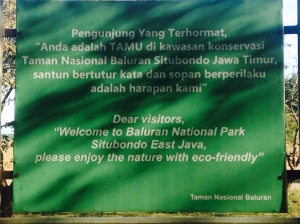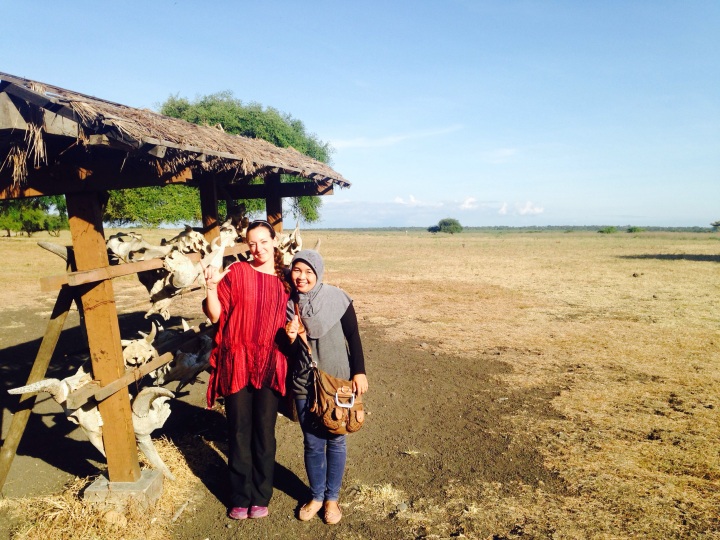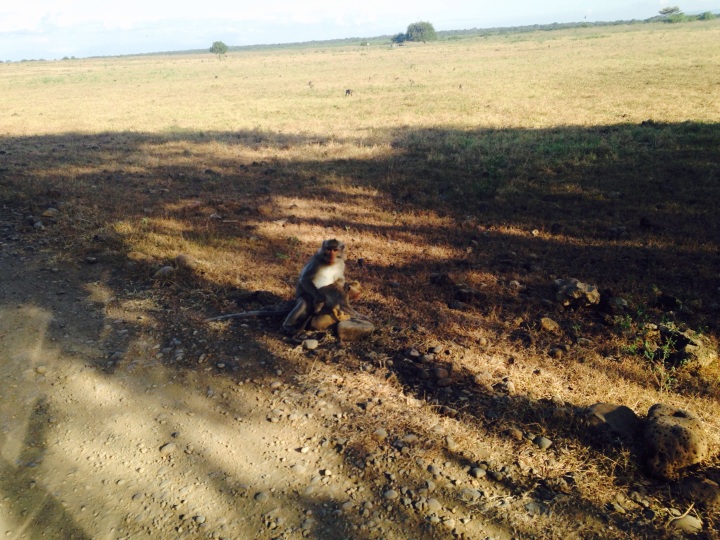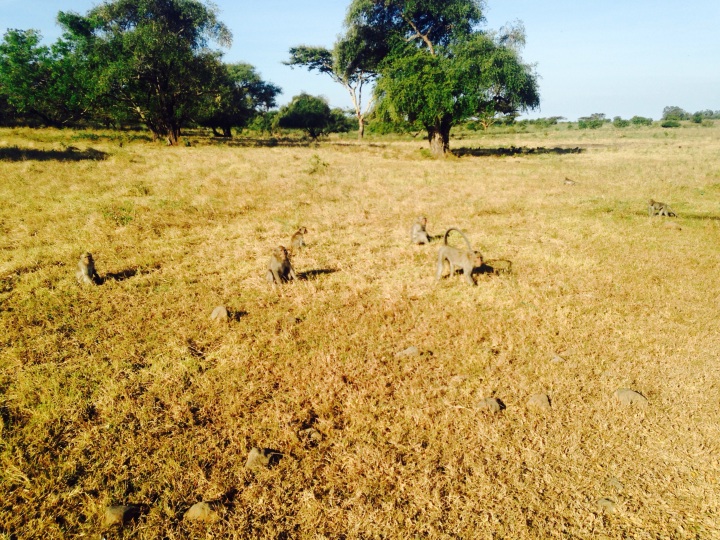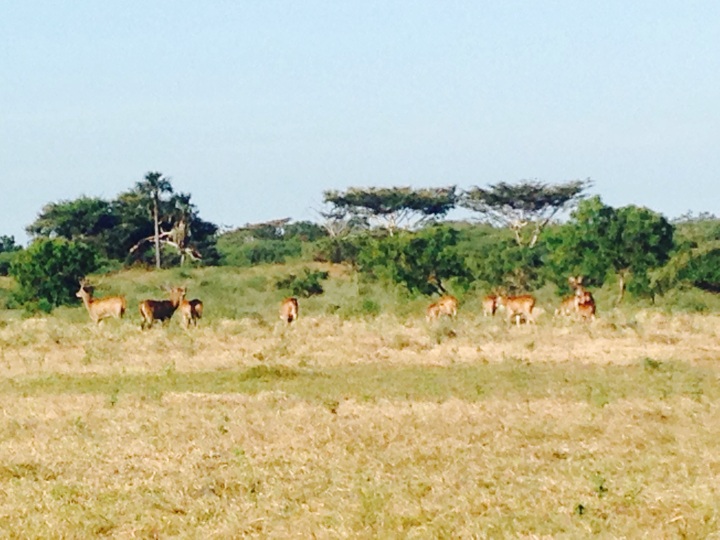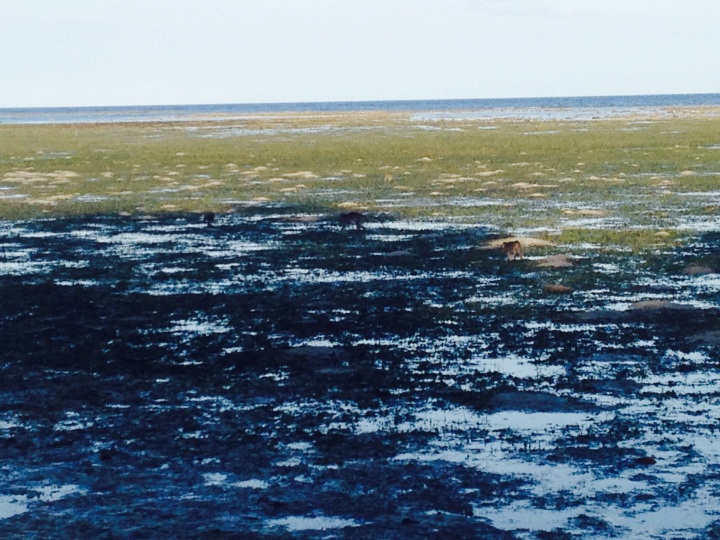By Craig (disclaimer: long post, but lots of pics)
Day 1
It starts at school Friday afternoon, all the kids excited and giddy as we pack up 4 large trucks (like dump trucks) with bags, bamboo, propane, food, water, and their red and yellow hiking sticks that is a sign that you are with the Pramuka (Indonesian Scout group). It is almost the entire 10th grade, so around 200 kids plus a few veterans (11th grade) to show the new recruits how to camp, and about 8 -9 teachers from my school. We are heading to a place called Songgon, where the kids tell me there is a beautiful waterfall.
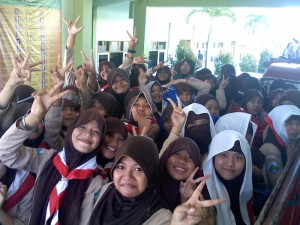
Kids packed in the back of one of the 4 trucks
After all the “stuff” is packed in the back of the trucks, we start packing in the kids like sardines in the rear beds of the trucks, piling on top of each other and on top of there bags so that no one is left behind.
We then leave for our three day adventure. One of the girls says to me “This is my dream adventure.” which really hits home to me because as a kid I was fortunate to have many opportunities given to me by my parents to go camping. But to think of kids here, who some don’t even go to the beach 45 minutes away, having their dream vacation as small as a camping trip 1.5 hours away, blows my mind. It really opens my eyes to the small things I’ve taken for granted growing up, like being able to go camping many times a year.
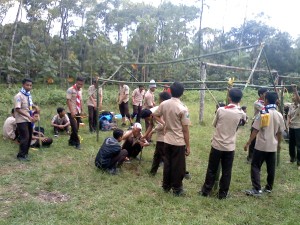
Camp Set-up
We drive the distance to this large soccer field on the edge of the small village Songgon. We unload and start to set up camp. The kids use rope, and bamboo to set up their initial structures and throw tarps over to use for shelter. This is definitely legitimate camping, For me they bring a normal tent like you would buy at the store so I feel I’m living like a king with my own tent. Its around 4 pm and everyone is almost set up when we begin the opening ceremony of Pramuka. Pak Akromin, one of my indonesian counterparts and fellow English Teacher is the Scout Leader, he starts with introductions and an explanation of why we are here and how to behave, etc.

Pak Akromin holding the opening ceremony
We also have brought with us a generator to give light to each tent set up (about 9-10 tents) they string an electric wire between each single light bulb in each tent. They also have brought two large speakers a little taller than I am and a microphone so that everyone is able to hear announcements and instructions on what comes next, oh there is also very loud music being played while everyone finishes setting up.
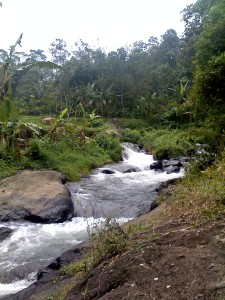
A river near our Campsite
The first night is filed with guitar songs, a bonfire, playing cards, exploration of the area which there is a beautiful river just down the hill from where we are, and lots of chit chat and excitement. For some of the kids, this is the first time being away from home for a night and being away from their parents so they happily enjoy their freedom and some end up staying up all night. I finally go to sleep around midnight, anxious to know what lies ahead the next morning.
Day 2
I wake up to the sound of someone blowing into the mic to test it at 4am announcing that it is time for the morning prayer of Subuh. Soon after there is an announcement that there will be Sanam (a type of group jazzercise) in 10 minutes and that everyone should be getting ready to participate, at this time its about 4:45 so I decide to rise out of my tent and join the activities.
After about an hour of sanam and breakfast, we all get ready to go on our 1.5 hour hike to the nearby waterfall (the reason why we are camping in this spot) As Scouts, all the kids form groups of 9-10 in which they will be hiking together, I join a group of 9 girls to stay with on the hike.
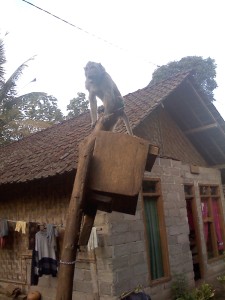
We hike through some small villages, We pass monkeys, motorocycles, banana trees, elementary schools, and kids playing in the streets, back alleys through a school, down and up a few hills when we come to this big opening where we are greeted with an amazing mountainous landscape and rice, tomato, and pepper fields as far as you can see. (pic below)
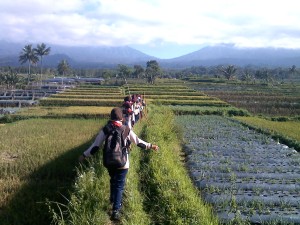
Hiking through the fields
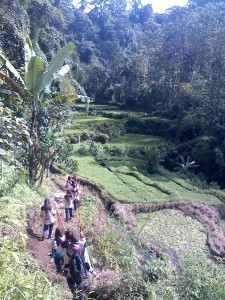
Selada fields

Selada Fields
Next we find ourselves walking through a little bit of jungle before we come to the top of a hill, walking along a cliff we come to another opening where in front of us is a lush green valley of water filled paddies, I come to find out they are Selada fields, filled with what the kids described as salad greens, I’ve never come across a salad as far as Americans think of salads here other than in a big city at a restaurant but I would imagine they use these greens for fried greens, and to mix in with noodles and rice dishes like fried rice and fried noddles.
We get through the wet, winding, narrow pathed selada fields and come to this amazing river, not too wide but very loud as there is about a 60ft water fall pounding the black slate rock just up river. Down stream from the large water fall there is about a 12ft waterfall where the kids try to convince me to join them and jump in (I must of sat up there for about 15 minutes asking the same question, “is it safe?” they would say “Ya Dong” which means “ya man, duh!”[we are doing it so of course its safe]) and they would ask me “Berarni?” which means Brave? and I would say “Belum” which means not yet, but I did finally jump in.

At first I’m very afraid because the water is not that deep at the bottom but they assure me to just ball up and I will be greeted with small pebbles and soft sand at the bottom. I do it, I jump in, and its amazing. The water is cool and refreshing and the rush of the jump has my adrenaline going 100 miles per minute. I love it. I do it over and over again (probably about 20 more times). The kids love seeing me act as a kid too. 🙂 We hang out at the river for about an hour before we start packing up and heading back to camp.
We get back just before sunset, enough time to take a mandi (bath) before dinner and to get ready for the massive bonfire we will have that night. Before we start the fire, there is of course a ceremonial ritual (they just make it up that night but they love ceremonies) they go through a practice run before the real thing. There are 5 candle holders, they each say a rule or code of the pramuka, light their candle on the eternal flame of the pramuka and each walk to a point which seems to be the five points of a star around the fire, set their candle down and march away in a militaristic fashion, in a line one after another. Then the head of the scouts (Pak Akromin) takes the eternal flame of the pramuka walks to the stack of wood and proceeds to give a speech about honor, bravery, courage, and what it means to be an Indonesian Scout and then places the flame into the fire. Of course if you know anything about fires, you need three essential things to start a fire. Fuel (wood), Oxygen (fires need to breath), and Heat.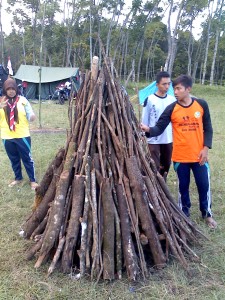
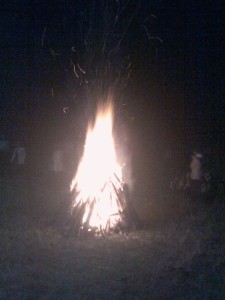 If you’re fire doesn’t start you are lacking one of those three important parts. In this case, we are lacking heat, since its actually cold out where we are, when Pak Akromin sets the flame in the fire, a few of the veterans (11th graders) have prepared a few “fire starters” to get this bonfire going in a matter of minutes. These fire-starters are actually small plastic bags of gasoline or Propane, not big enough to cause any kind of damage but enough to when thrown at the wood, it bursts and spreads the flame around the wood to catch. They must have thrown about 15-20 of these little bags on the fire, each exploding with fire around the wood but burning faster than the wood could catch. After about 30 minutes of this the Bonfire finally catches by itself and turns into a massive triangular bonfire, burning red ashes reaching 30-40 ft in the air. I was about 20 ft away from this fire and i could feel the skin on my shins starting to burn which meant I was still too close.
If you’re fire doesn’t start you are lacking one of those three important parts. In this case, we are lacking heat, since its actually cold out where we are, when Pak Akromin sets the flame in the fire, a few of the veterans (11th graders) have prepared a few “fire starters” to get this bonfire going in a matter of minutes. These fire-starters are actually small plastic bags of gasoline or Propane, not big enough to cause any kind of damage but enough to when thrown at the wood, it bursts and spreads the flame around the wood to catch. They must have thrown about 15-20 of these little bags on the fire, each exploding with fire around the wood but burning faster than the wood could catch. After about 30 minutes of this the Bonfire finally catches by itself and turns into a massive triangular bonfire, burning red ashes reaching 30-40 ft in the air. I was about 20 ft away from this fire and i could feel the skin on my shins starting to burn which meant I was still too close.
The rest of the night is filled with skits and songs sang by the different classes of MAN Srono, anywhere from parodies of Pramuka chants (they call them “Yell Yells”) and main stream Indonesian songs, to songs made up by a class to show their love for MAN Srono Pramuka. I love it. Every class has something to offer and often are greeted with laughter and applause when finished. Just being silly and having fun.
Day 3
Another morning filled with Senam, breakfast, a final closing ceremony and you can tell there is a lull in the kids motivation for jazzercise this morning because they are tired, and also they know they will be going home soon. Our last adventure is taking a “jalan sehat” a “health walk”. At school we take these and they are about 2km long, down and back the streets near our school.  Here we head out on this walk and end up walking about 5km up this huge mountain and back down to end up back at camp. I get a nice glimpse of Mount Melalu, and just behind it is Mount Raung (the volcano which is currently spewing out grey ash that is closing nearby airports including Bali.) Once we get back everyone starts packing up their tents and we head back to MAN srono. I definitely hope to join these scouts again before I come back to America so I can learn to appreciate a little more what Camping really is about.
Here we head out on this walk and end up walking about 5km up this huge mountain and back down to end up back at camp. I get a nice glimpse of Mount Melalu, and just behind it is Mount Raung (the volcano which is currently spewing out grey ash that is closing nearby airports including Bali.) Once we get back everyone starts packing up their tents and we head back to MAN srono. I definitely hope to join these scouts again before I come back to America so I can learn to appreciate a little more what Camping really is about.

